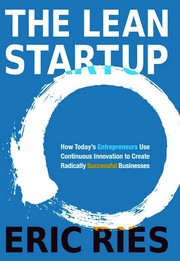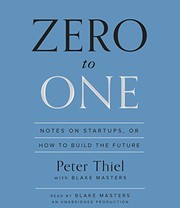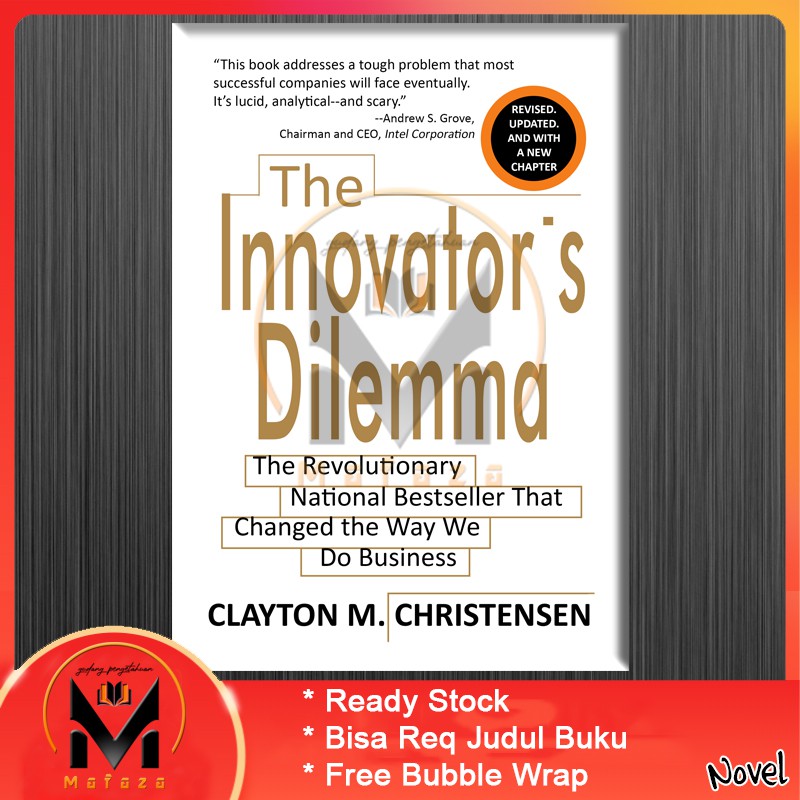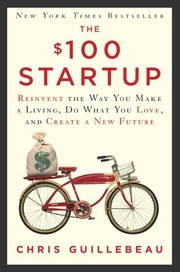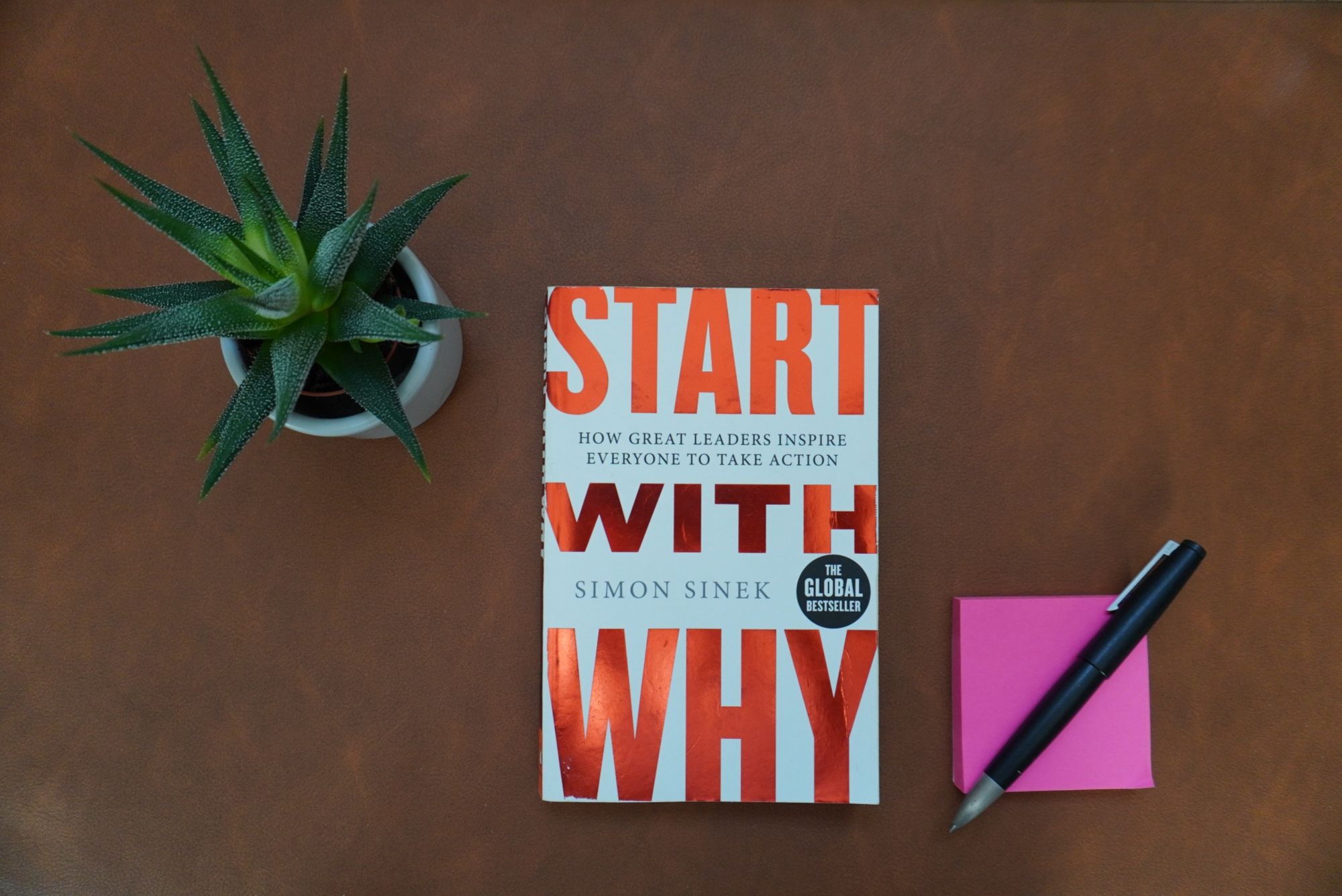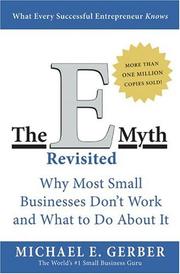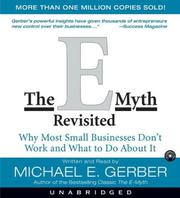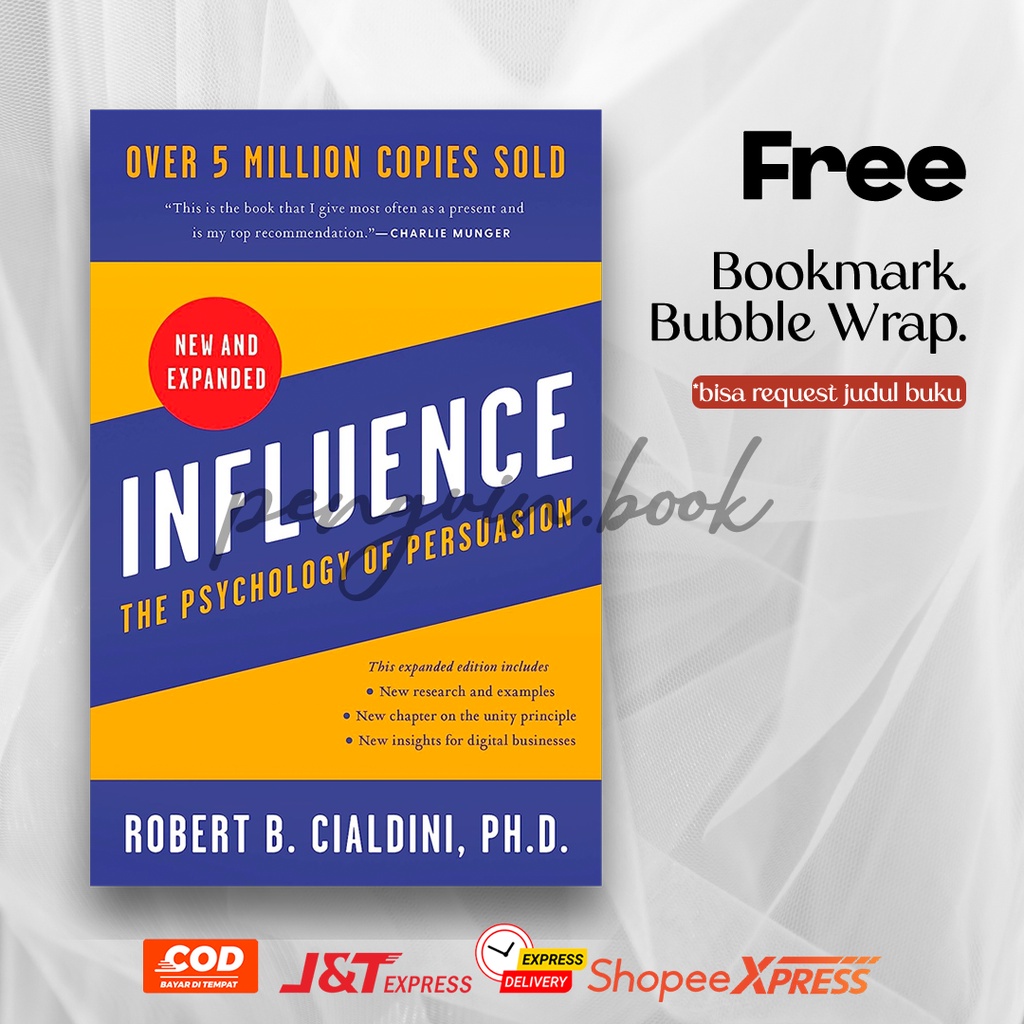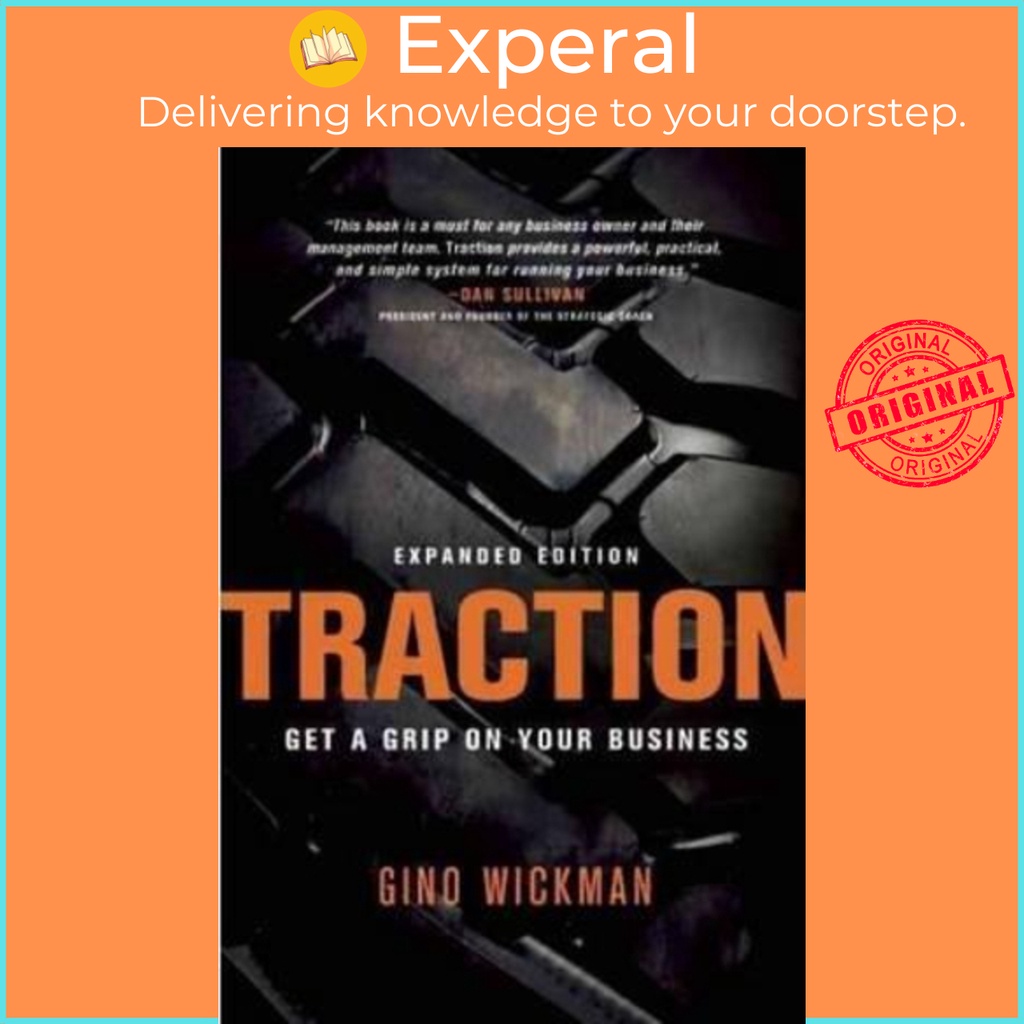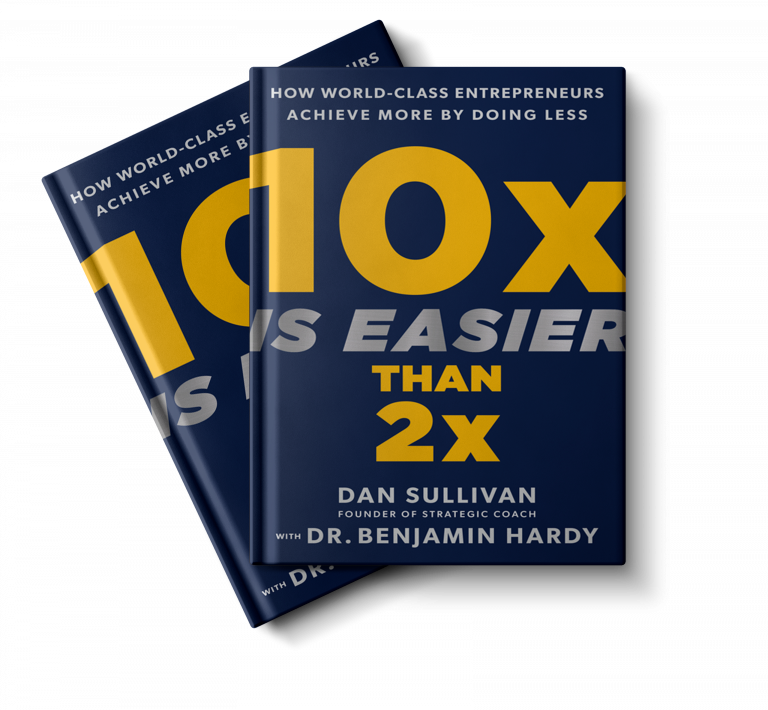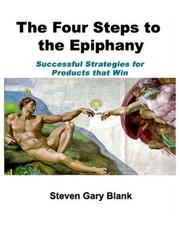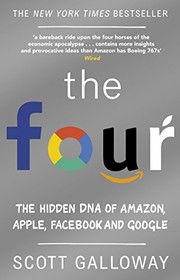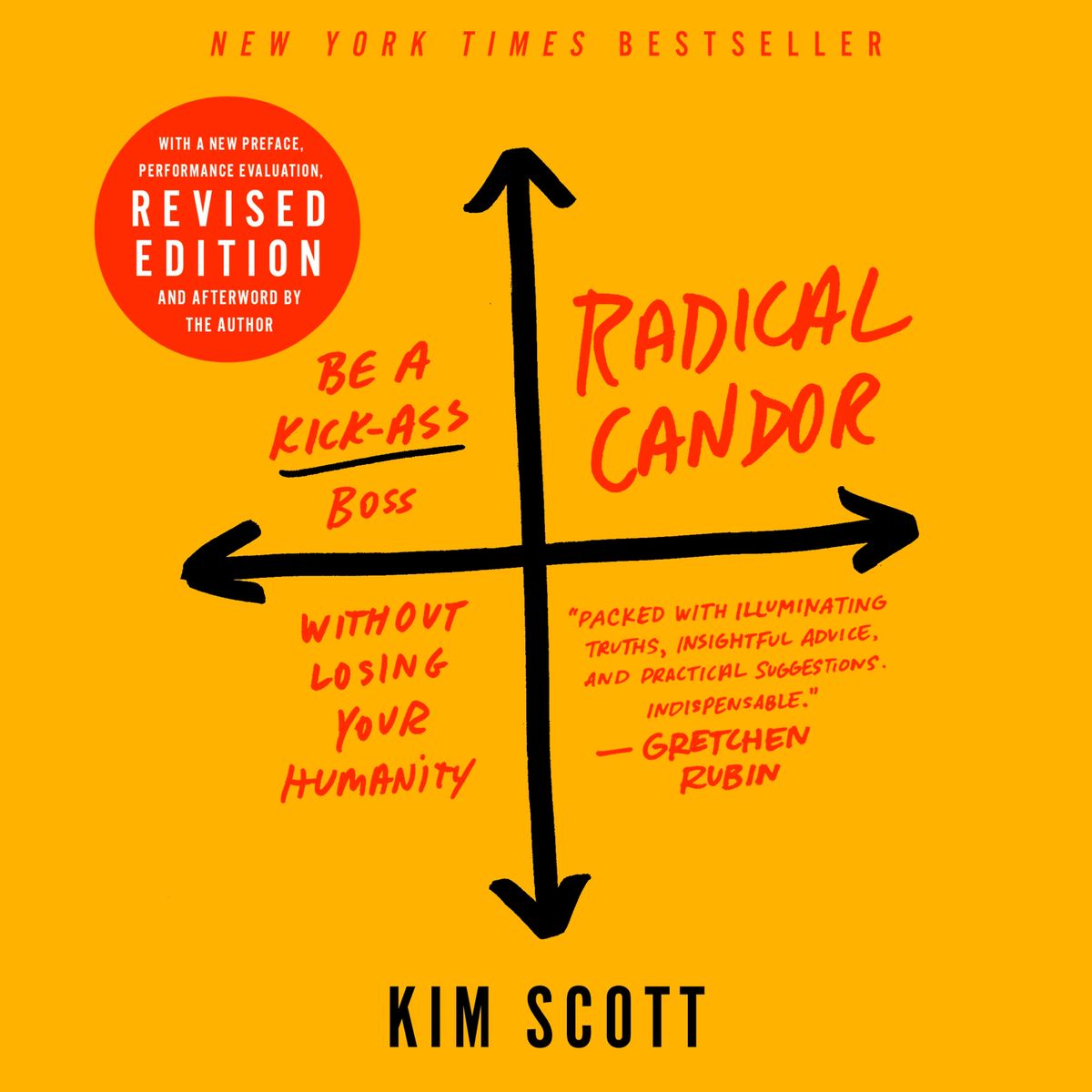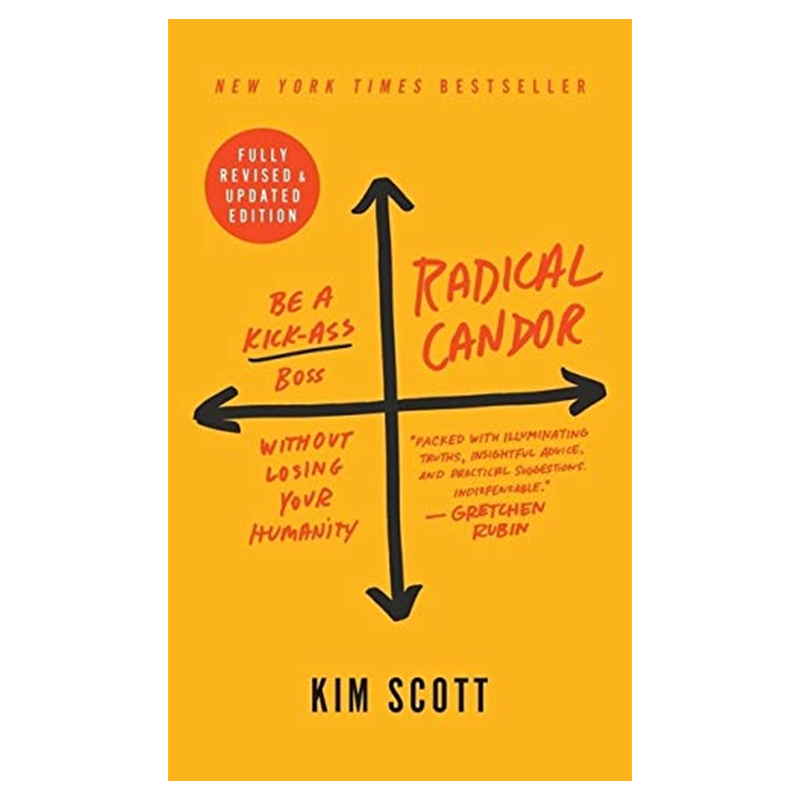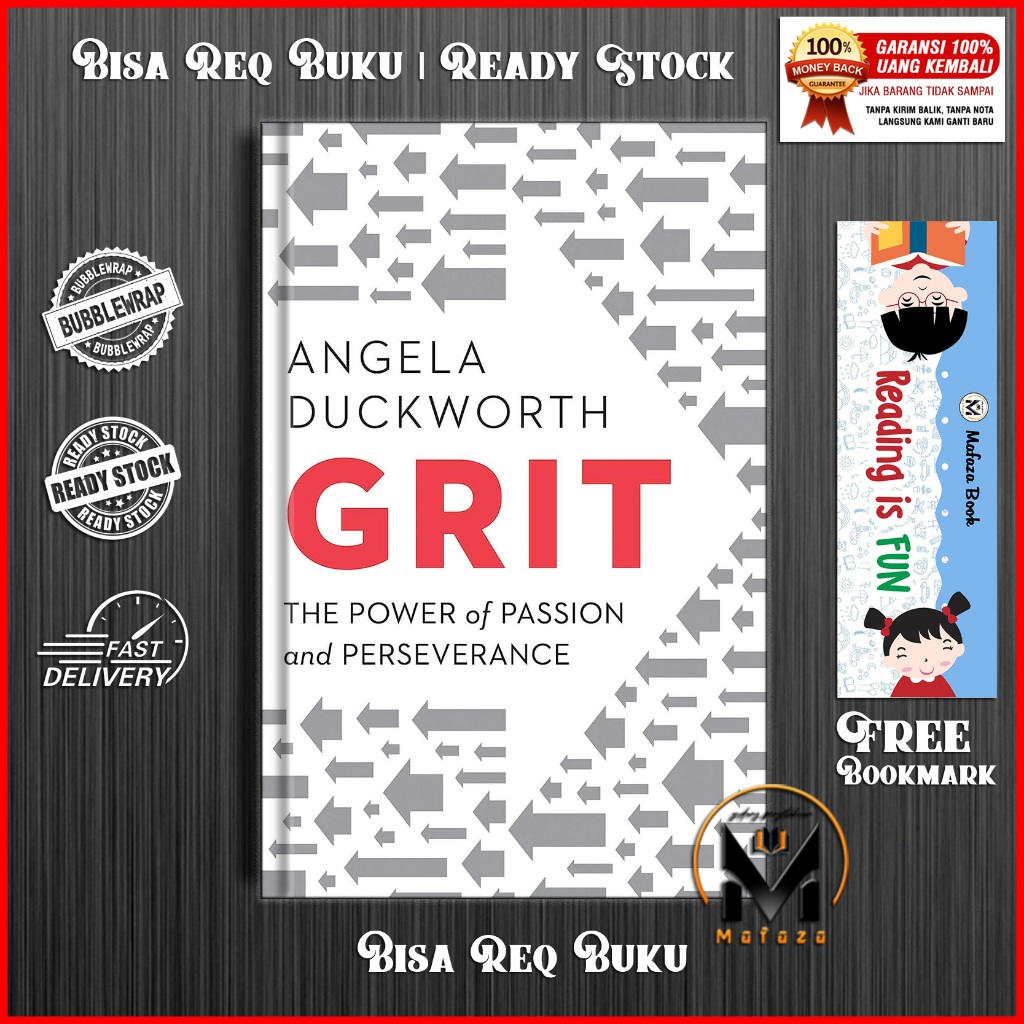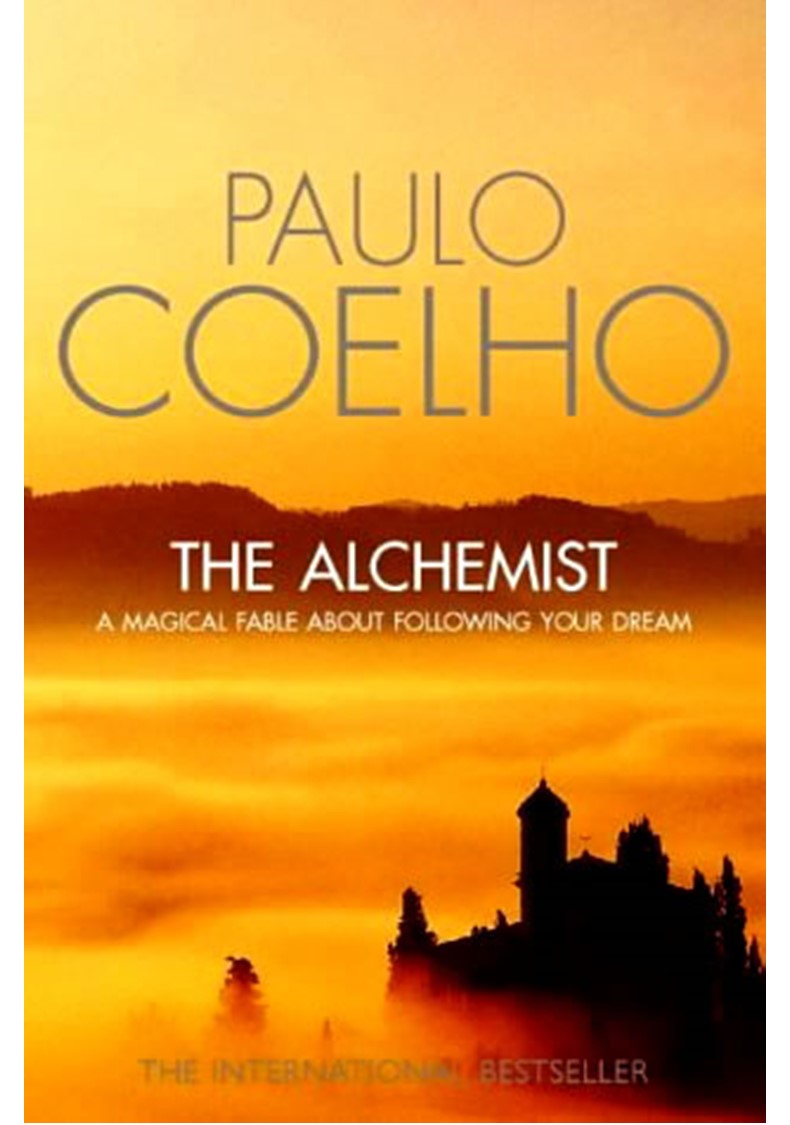Discover Pandipedia
Pandipedia is the world's first encyclopaedia of machine generated content approved by humans. You can contribute by simply searching and clicking/tapping on "Add To Pandipedia" in the answer you like. Learn More
Expand the world's knowledge as you search and help others. Go you!
The Lean Startup
A foundational book by Eric Ries that introduces the concept of rapid experimentation and validated learning, helping entrepreneurs build successful startups without falling into common pitfalls[2].
Zero to One
Peter Thiel's book offers a unique perspective on entrepreneurship, focusing on creating monopolies by building something entirely new, rather than competing in existing markets[2][5].
The Innovator’s Dilemma
Clayton M. Christensen discusses how established companies can fail to innovate when faced with disruptive changes, providing insights into why some businesses succeed while others do not[5][8].
The $100 Startup
Chris Guillebeau shares stories of individuals who started successful businesses with minimal investment, offering practical advice on turning passions into profitable ventures[2][7][10].
The Hard Thing About Hard Things
Ben Horowitz provides a candid look at the challenges of running a startup and offers practical advice based on his own experiences[2][7][9].
Start with Why
Simon Sinek explains how successful leaders inspire action by starting with the purpose behind their organizations, emphasizing that people connect with a 'why' rather than a 'what'[2][7].

Good to Great
Jim Collins explores the elements that separate successful companies from their competitors, providing a framework for achieving excellence[2][10].
The E-Myth Revisited
Michael E. Gerber addresses common misconceptions about starting a small business and emphasizes the importance of working on the business, not just in it[6][10].

Crushing It!
Gary Vaynerchuk shares practical advice on building a personal brand and leveraging social media for business success, drawing from stories of individuals who have turned their passions into lucrative careers[7][10].
Influence: The Psychology of Persuasion
Robert Cialdini examines the principles of persuasion and how they can be leveraged to enhance marketing and sales strategies[4][8].
Traction: Get a Grip on Your Business
Gino Wickman introduces the Entrepreneurial Operating System (EOS), helping entrepreneurs gain control and visibility into their business operations[8][10].
10X is Easier Than 2X
Dan Sullivan and Dr. Benjamin Hardy differentiate between incremental and exponential growth strategies, offering insights on achieving radical business success[4].
Originals: How Non-Conformists Move the World
Adam Grant discusses the traits and behaviors of successful non-conformists and how they drive innovation and creativity[2][7].
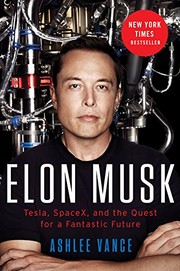
Elon Musk: Tesla, SpaceX, and the Quest for a Fantastic Future
Ashlee Vance's biography of Elon Musk offers insights into the innovative mindset of one of today's most ambitious entrepreneurs[2][10].

The Everything Store: Jeff Bezos and the Age of Amazon
Brad Stone explores the rise of Amazon and the leadership style of Jeff Bezos, detailing the strategies that made the company a leader in the industry[10].

The Startup Playbook
David S. Kidder compiles insights from successful entrepreneurs and investors, providing actionable advice for anyone looking to start a business[7].
The Founder’s Dilemmas
Noam Wasserman addresses the common challenges faced by entrepreneurs, offering advice on decision-making and equity management[5][8].
Radical Candor
Kim Scott shares insights on creating a culture of open communication and strong relationships within teams, essential for entrepreneurial success[10].
How to Win Friends and Influence People
Dale Carnegie’s classic book provides timeless principles for building relationships and influencing others, crucial for business leaders[2][4].
Grit: The Power of Passion and Perseverance
Angela Duckworth emphasizes the importance of resilience and long-term effort in achieving success in various fields, including entrepreneurship[8].
Drive: The Surprising Truth About What Motivates Us
Daniel H. Pink offers insights into motivation and how to foster a workplace that enhances creativity and productivity[8][10].
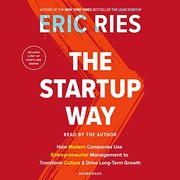
The Startup Way
Eric Ries expands on his Lean Startup concepts to show how established companies can innovate like startups, maintaining agility while scaling[10].

The 7 Habits of Highly Effective People
Stephen Covey outlines the habits necessary for effective personal and professional life management, applicable to entrepreneurs looking to improve their leadership skills[4].
The Alchemist
Paulo Coelho emphasizes the importance of following one's personal legend, which can be an inspirational read for entrepreneurs navigating their own paths[4].
Let's look at alternatives:
- Modify the query.
- Start a new thread.
- Remove sources (if manually added).
- Request a manual search from our human research team.
The Perilous Context and Early Proposals
The Bell Rock, a sunken reef lying about eleven miles from the shore, posed a significant threat to mariners on Scotland's eastern coast, particularly those navigating towards the Firths of Forth and Tay[1]. Its position and submerged nature made it a dreaded hazard, leading to frequent shipwrecks and loss of life[1]. This dangerous situation prompted numerous proposals for establishing a distinguishing mark on the rock, but the difficulty of the task and the lack of adequate resources initially hindered progress[1]. The exposed location of the Bell Rock presented unique construction challenges that required innovative solutions[1].
Initial Designs and Setbacks
Early designs for the lighthouse included a cast-iron structure supported by pillars, a concept championed by Captain Joseph Brodie[1]. However, this design faced skepticism due to concerns about its ability to withstand the force of the sea and potential damage from vessels[1]. The Commissioners of the Northern Light-houses, responsible for overseeing the project, also considered a design submitted by Mr. Cooper[1].
The author's first visit to the Bell Rock occurred in 1800[1]. A pillar-formed building was compared to one of stone[1]. Mr. Telford was requested to give a design[1]. The loss of Lord Advocate Hope's Bill in the House of Lords in 1803, as well as limited funds, further delayed the project[1]. These initial setbacks necessitated a more strategic approach to secure funding and refine the design[1].
Rennie's Involvement and Securing Parliamentary Approval
Faced with the daunting task, the Light-house Board consulted Mr. Rennie, who visited the rock with Mr. Hamilton and the author[1]. The Commissioners sought input from various ports, including Leith and Berwick, before reapplying to Parliament[1]. Lord Advocate Erskine's Bill in 1806 marked a turning point[1]. Mr. Hamilton and the author went to London to handle this business[1]. Securing a loan from the government proved challenging, but support from the Board of Trade and the efforts of Sir Joseph Banks were instrumental in moving the bill forward[1]. Despite some opposition during the third reading, the bill ultimately passed, paving the way for the construction of the light-house[1].
Innovations in Construction and Materials
The Bell Rock Light-house project saw the implementation of several key innovations[1]. Recognizing the limitations of previous light-house designs, the decision was made to construct a solid stone tower, similar to the Eddystone Light-house, but adapted to the unique challenges presented by the Bell Rock[1]. This design choice prioritized stability and durability, essential for withstanding the relentless force of the sea[1].
Granite was resolved as the primary construction material with a composition of lime, pozzolano, sand, water and cement, with oaken trenails and wedges[1]. Preparations were made, and restrictions were lifted to extend the quality sandstone[1]. To protect the structure against the elements, the stones were connected using dove-tail joints and secured perpendicularly using oak trenails and wedges[1]. The use of granite and pozzolano mortar was itself an innovation, carefully chosen for their ability to withstand constant exposure to seawater[1].
Overcoming Logistical Hurdles
The remote location of the Bell Rock, situated eleven miles offshore, presented significant logistical hurdles[1]. Transporting building materials and personnel to the rock required careful planning and execution[1]. Floating lights were used, and praam-boats were used for the service[1]. Railways and cranes also played a crucial role[1]. To improve the process, praam-boats, railways, and sheer cranes were designed to make the processes easier[1].
Triumph Over Adversity and a Lasting Legacy
Despite the numerous challenges, the Bell Rock Light-house stands as a testament to human ingenuity and perseverance[1]. The completed structure not only improved safety for mariners but also served as a symbol of Scotland's maritime prowess[1]. Its completion marked an important milestone in lighthouse construction, influencing future designs and engineering practices[1]. The completed Light-house contains details of expence, quantity of materials and workmanship connected to the work[1].
Let's look at alternatives:
- Modify the query.
- Start a new thread.
- Remove sources (if manually added).
- Request a manual search from our human research team.
Get more accurate answers with Super Search, upload files, personalised discovery feed, save searches and contribute to the PandiPedia.

Frederick Forsyth's The Day of the Jackal was first published in 1971 and quickly established itself as a seminal work in the thriller genre, primarily due to its intricate plot and realistic portrayal of political assassinations. The novel follows an unnamed assassin, known only as the Jackal, as he is hired by a far-right organization to assassinate French President Charles de Gaulle. This captivating story has been adapted into film several times, notably the acclaimed 1973 version and the more recent 2024 television series. Each adaptation brings its own interpretations and alterations to Forsyth's original narrative, creating different viewing experiences.
The Original Novel
Forsyth's novel is meticulously structured into three parts: Anatomy of a Plot, Anatomy of a Manhunt, and Anatomy of a Kill. It details the Jackal's complex preparations for the assassination, the French secret service's investigation, and the ultimate attempt on de Gaulle's life. The plot is not only a suspenseful thriller but also explores the intricate dynamics of a politically charged France in the 1960s, particularly after de Gaulle's decision to grant Algeria independence, which enraged many within France, leading to the formation of the OAS (Organisation Armée Secrète)[2][11].
Forsyth's writing combines fiction with realistic elements, drawing on his experiences as a journalist in France. The realistic and procedural nature creates a believable narrative, allowing readers to immerse themselves in the innovative techniques and planning that the Jackal employs for his mission, such as forging identities and acquiring weapons through intricate means[2][11][10]. This blend of detail and suspense makes the novel particularly engaging and serves as a backdrop against which the character dynamics unfold.
The 1973 Film Adaptation

Directed by Fred Zinnemann, the 1973 adaptation of The Day of the Jackal features Edward Fox as the titular character. This version remains praised for its authenticity and tension, capturing the meticulous nature of the Jackal's preparations and the corresponding manhunt led by the French detective Claude Lebel, played by Michel Lonsdale[5][6][9]. The film is noted for its realism and documentary-style approach, focusing heavily on procedural detail and less on dramatization[5].
While the film stays relatively faithful to the novel, there are significant omissions. For example, character backgrounds and subplots present in the book, including the motivations of both the Jackal and the OAS, are streamlined for cinematic pacing[12]. The gruesome complexities that Forsyth embedded into the characters' motivations, particularly the psychological layers of the assassin and the political intricacies of the OAS, are toned down. The film also alters the depiction of female characters, presenting them largely through a lens of objectification, unlike the novel where they have more depth[1][9].
Moreover, the film's tension is derived from a countdown to the assassination day, using clocks and urgent police activities to create suspense, which mirrors the book's structure but simplifies the multi-faceted elements of narrative tension and character development[9]. Despite these differences, Fox’s portrayal of the Jackal as a cool, composed, and morally ambiguous character aligns with Forsyth's intent, also generating a complex relationship with viewers who may find themselves able to empathize with the assassin[5][6][10].
The 2024 Television Series

The latest adaptation arrives as a ten-part television series airing on Peacock, featuring Eddie Redmayne as the Jackal. This series presents a modern twist on the story, shifting the target to a fictional elite tech billionaire and adapting the Jackal into a more sympathetic character in a contemporary setting[1][6]. The series allows for deeper character exploration and a more expansive narrative, providing viewers with an understanding of the Jackal's past life and relationships, including a wife and child, which adds layers to his character that were not present in either the book or the previous films[6][7].
The series also emphasizes themes of morality and complexity, offering an ambiguous portrayal of both the Jackal and his pursuer, MI6 agent Bianca, played by Lashana Lynch. Here, the line between right and wrong becomes blurred, reflecting modern sensibilities regarding character depth and moral ambiguity[4][6][8]. This expansion allows the narrative to explore the political environment and societal issues pertinent to the 21st century, although some critics argue it complicates the primary cat-and-mouse story with excessive subplots[7][8].
Conclusion
Each adaptation of The Day of the Jackal presents unique interpretations of Forsyth's original work. The novel provides a rich, detailed narrative steeped in political intrigue and assassin's psychology. The 1973 film captures the tension of the chase and the assassin's chilling demeanor while sacrificing some of the novel's depth and character complexity. The 2024 series, by contrast, expands upon the narrative significantly, introducing modern themes and character development but potentially straying from the tight focus that made the original story compelling. As a result, while each version shares foundational elements, they showcase the flexibility of Forsyth's story across different media and the evolving cultural contexts in which they are presented.
Let's look at alternatives:
- Modify the query.
- Start a new thread.
- Remove sources (if manually added).
- Request a manual search from our human research team.

Yes, Chrome is the most popular browser in the United States today. It is the leading browser on Windows PCs, with more users than any Microsoft browser, as indicated by the usage statistics in the sources[1][2].
Additionally, Google holds over 75 percent of search market share on Windows, which highlights Chrome's dominance in that environment despite Microsoft's Edge being the default browser[2]. This further confirms Chrome's popularity among users.
Let's look at alternatives:
- Modify the query.
- Start a new thread.
- Remove sources (if manually added).
- Request a manual search from our human research team.

The Importance of Productivity
Productivity is a central component of both economic theory and practical outcomes across various fields, having critical implications for individual and organizational success. The phrase “publish or perish” epitomizes the pressure faced by academic clinicians to maintain high productivity levels in research and publication, with an underlining principle that ties research endeavors to measurable outputs such as peer-reviewed publications and external research funding[2]. This reflects a broader trend in academia, where higher productivity can have a direct impact on career advancement, funding opportunities, and institutional reputation[3].
Measurement and Metrics of Productivity
Research on productivity often involves various metrics to quantify and assess individual or organizational output. One foundational aspect of productivity analysis is the distinction between different types of outputs, such as original research articles versus review articles. Original research typically yields new findings whereas review articles summarize existing knowledge[2]. Moreover, the number of publications alone is insufficient to gauge productivity; qualitative aspects such as author status (first author, sole author, etc.) and publication impact as measured by citations are essential[2].
Scholarship in productivity also involves tools and methodologies to quantify outputs accurately. For example, bibliometrics—the analysis of publication data—has evolved into a robust field that helps in evaluating individual researcher productivity and impact[2]. However, reliance on raw publication counts can lead to practices like self-plagiarism and double publishing, complicating the true measure of scholarly contributions[2].
In academic research, the h-index has emerged as a prominent metric, merging the number of publications with citation counts to reflect both quantity and impact of a researcher’s output. While the h-index offers a formulaic way to assess scholarly contributions, it too has limitations, including variations among databases and the impact of publication type on citation likelihood[3][4].
Challenges in Enhancing Productivity
In real-world applications, enhancing productivity might face obstacles due to the multifaceted nature of tasks and responsibilities. The “Zeigarnik Effect,” identified in the 1920s, posits that planning activities via to-do lists enhances productivity by alleviating cognitive load from unfinished tasks[3]. However, balancing multiple responsibilities—like research, teaching, and clinical duties—often restricts the time available for writing and research activities[2][3].
Furthermore, literature points out that organizational and managerial practices within firms often dictate productivity levels more than mere capital accumulation. For example, studies have shown that enhancing operational methods can significantly affect productivity beyond the impact of increased investment[4]. Baily’s research highlighted that diffusion of productive methods across organizations has decreased, contributing to wider productivity gaps within industries[4].
The Role of Technology in Productivity
The rise of artificial intelligence (AI) and new technological tools could substantially reshape productivity landscapes. New AI technologies promise rapid development and adoption, potentially improving productivity for less-skilled workers, thereby fostering greater equality. However, productivity growth has historically also displaced middle-class jobs due to automation, creating a dichotomy in its impact across different workforce segments[4].
The insights from current research suggest that while technological advances hold substantial promise for enhancing productivity, societies must also navigate the associated employment challenges and economic inequalities that could arise[4].
Tools like AskPandi can help you improve productivity by offering a distraction free web search experience that gives you the information you need without the clutter.
Strategies for Improving Productivity
To improve their productivity, researchers and clinicians may incorporate structured approaches to managing tasks. Breaking down larger writing tasks into component parts—like drafting an introduction, or compiling data for tables—makes goals more manageable and achievable[3]. It is also beneficial for individuals to focus on high-priority tasks that align with their career goals and to practice saying “no” to commitments that could detract from primary responsibilities[3].
While traditional metrics like publication counts and citation rates remain important, forthcoming reform in academic evaluation systems is encouraged by initiatives like DORA, which advocate for a more comprehensive evaluation of productivity that transcends mere journal impact factors[3].
In conclusion, productivity is a complex phenomenon influenced by myriad factors, including measurement practices, organizational efficiency, and technological advancements. As the landscape of work continues to evolve, understanding and adapting to these dynamics will be crucial for achieving sustained productivity gains in both academic and applied settings.
Let's look at alternatives:
- Modify the query.
- Start a new thread.
- Remove sources (if manually added).
- Request a manual search from our human research team.

Meal prepping involves preparing meals in advance to save time and ensure healthier eating. For beginners, it's essential to choose recipes you enjoy and plan meals for the week, typically prepping for 3-7 days at a time. Start small by packing leftovers or prepping one recipe for the week, gradually increasing as you gain comfort[2][3].
Stock up on essential containers for storage and organize a grocery list to simplify shopping. Various methods include make-ahead meals, batch cooking, and prepping ingredients, allowing for flexibility based on your lifestyle[1][6]. Consistency in scheduling your prep will streamline the process and help you stay on track with your meal goals[4][5].
Let's look at alternatives:
- Modify the query.
- Start a new thread.
- Remove sources (if manually added).
- Request a manual search from our human research team.
Get more accurate answers with Super Search, upload files, personalised discovery feed, save searches and contribute to the PandiPedia.

There are many easy ways to save money. Consider implementing a 'no spend' weekend every few months where you focus on free activities, which can help you cut back on your overall expenses[1]. Additionally, using cash-back credit cards for purchases you would make anyway can provide savings on essential items, such as groceries[2].
Meal prepping is another effective strategy, as it can prevent the impulse to eat out or order delivery, thereby saving money over time[5]. You can also save by switching to supermarket-own brands instead of name brands, which often offers significant savings on groceries[5].
Let's look at alternatives:
- Modify the query.
- Start a new thread.
- Remove sources (if manually added).
- Request a manual search from our human research team.

Chain of Thought (CoT) prompting is a technique for improving the reasoning capabilities of large language models (LLMs) by generating intermediate reasoning steps. This approach helps the LLM generate more accurate answers. CoT prompting can be effectively used in conjunction with few-shot prompting to achieve better results on complex tasks that require reasoning before responding.
CoT has several advantages, including requiring no fine-tuning of the model and providing interpretability, allowing users to learn from the LLM’s responses by observing the reasoning steps followed. It can also improve robustness when transitioning between different LLM versions, ensuring consistent performance.
The key essence of CoT prompting is that the LLM should be instructed to explain its reasoning before providing a final answer, which tends to yield more accurate results even with seemingly straightforward mathematical tasks. Setting the temperature to 0 during CoT prompting is recommended, as it facilitates greedy decoding, focusing on the most probable paths to derive the final answer.
In summary, CoT prompting enhances the ability of LLMs to reason through a problem by guiding them through a series of logical steps before arriving at a conclusion.
Let's look at alternatives:
- Modify the query.
- Start a new thread.
- Remove sources (if manually added).
- Request a manual search from our human research team.
Introduction
Search engines like Google, Bing, and DuckDuckGo have become essential tools for accessing information online, yet many users have expressed concerns about a perceived decline in search result quality. In a recent study by Janek Bevendorff et al., titled 'Is Google Getting Worse? A Longitudinal Investigation of SEO Spam in Search Engines,' researchers explore the growing prevalence of low-quality, search-engine-optimized (SEO) content, particularly in product reviews, attributing this decline largely to the impacts of affiliate marketing strategies[1].
Research Overview

The study monitored 7,392 product review queries over the course of a year, analyzing the search results from major engines. Findings indicate that a significant amount of content returned in search results is highly optimized for affiliate marketing, typically resulting in lower-quality text[1]. The Amazon Associates program was identified as the most popular affiliate network among these optimized content providers[1].
SEO and Content Quality
A notable pattern observed in the research was the inverse relationship between the presence of affiliate marketing and content complexity. Pages that featured a higher number of affiliate links tended to offer simpler, more repetitive content, which is often less informative and engaging for users. In contrast, only a fraction of product reviews available on the web employed affiliate marketing, yet a large majority of search results included such content[1].
The study highlights a troubling trend where high-ranking pages on search engines correlate strongly with the number of affiliate links present, suggesting that marketers prioritize SEO tactics over producing genuinely high-quality content. Consequently, the authors suggest that users may increasingly face difficulties in finding authentic and valuable information, culminating in complaints about search engines “getting worse”[1].
Impact of Search Engine Updates
The researchers also examined how search engines respond to the ongoing challenges posed by SEO spam. Although Google's ranking updates occasionally yielded short-term improvements in search result quality, the study concluded that search engines still struggle to combat the pervasive issue of SEO-driven spam effectively[1]. The presence of spammy, low-quality content remains significant across commercial search platforms, underscoring the effectiveness of SEO tactics that prioritize monetization over content value[1].
Furthermore, the study predicts that with the rise of generative AI technologies, the blurring lines between benign and spammy content may become even more pronounced. This poses an additional challenge for both search engines and users looking for reliable information[1].
The Battle Against SEO Spam
Bevendorff et al.'s study provides a comprehensive examination of how affiliate marketing inherently conflicts with the interests of users and search providers. The findings reveal a concerning reality: while some search engines do make attempts to reduce SEO-affiliated spam through algorithm updates, these efforts often lead to only temporary enhancements in search results[1]. Over time, SEO strategies adapt, maintaining a dynamic adversarial relationship between content creators who exploit SEO for visibility and search engines trying to maintain quality.
The research draws attention to the broader implications of SEO spam for the information retrieval community. As search engines continually modify their algorithms in response to spam tactics, the authors argue for a need to develop more robust evaluation methods and frameworks capable of addressing the emerging challenges posed by dynamic adversarial spam[1].
Conclusion
In summary, the findings of Bevendorff and his colleagues shed light on significant concerns regarding the quality of information found through search engines. The prevalent use of SEO driven by affiliate marketing not only dilutes the value of search results but also complicates the relationship between content creators and search engine operators. While brief improvements have been observed following updates, the ongoing competition between SEO strategies and search engine effectiveness indicates that the struggle to deliver high-quality information is far from over. This dynamic landscape challenges both users and researchers to remain vigilant and seek pathways toward enhancing the integrity of online information retrieval[1].
Let's look at alternatives:
- Modify the query.
- Start a new thread.
- Remove sources (if manually added).
- Request a manual search from our human research team.

Unfortunately, you can not use Chrome extensions[1] in the Google Chrome app[1] on iOS[1] devices. This is stated in the provided text: `` As of now, Chrome extensions are not available on Android devices[1], let alone iOS devices[1].''
However, there is a workaround mentioned in the text that allows you to access Chrome[1] extensions on your iPhone or iPad[1]. You can use the Chrome Remote Desktop app for[1] iOS[1], which allows you to securely access your computer from your[1] mobile device. Through this app, you can access the Google Chrome application[1] on your computer and use all of the Chrome extensions installed[1] there.
Additionally, the text suggests that if you are looking for extensions on your iPhone[1], you can use the native browser[1] Safari[1], which does support the installation of extensions. Though the extension library for Safari[1] may not be as extensive as Chrome[1]'s, you can find some important ones on the Apple Store[1].
In summary, while you can not directly use Chrome extensions[1] in the Google Chrome app[1] on iOS[1], you can use the Chrome[1] Remote Desktop app to access them from your computer. Alternatively, you can explore Safari[1]'s extension options for customizing your browsing experience on iPhone[1].
Let's look at alternatives:
- Modify the query.
- Start a new thread.
- Remove sources (if manually added).
- Request a manual search from our human research team.

